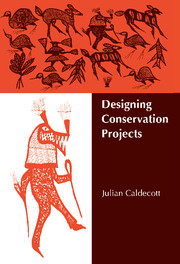Book contents
- Frontmatter
- Contents
- Foreword by Daniel H. Janzen
- Preface
- Acknowledgements
- 1 Introduction
- 2 Baram River, Sarawak
- 3 Cross River, Nigeria
- 4 Siberut and Flores Islands, Indonesia
- 5 Forest fragments in China and the Philippines
- 6 Costa Rican linkage projects
- 7 Irian Jaya, Indonesian New Guinea
- 8 Project themes and practicalities
- 9 Options for conservation
- 10 Options for development
- 11 Options for changing people's minds
- 12 Summary and conclusions
- Glossary
- Bibliography
- Index
4 - Siberut and Flores Islands, Indonesia
Published online by Cambridge University Press: 04 February 2010
- Frontmatter
- Contents
- Foreword by Daniel H. Janzen
- Preface
- Acknowledgements
- 1 Introduction
- 2 Baram River, Sarawak
- 3 Cross River, Nigeria
- 4 Siberut and Flores Islands, Indonesia
- 5 Forest fragments in China and the Philippines
- 6 Costa Rican linkage projects
- 7 Irian Jaya, Indonesian New Guinea
- 8 Project themes and practicalities
- 9 Options for conservation
- 10 Options for development
- 11 Options for changing people's minds
- 12 Summary and conclusions
- Glossary
- Bibliography
- Index
Summary
Conservation issues
Land, sea, and people
Indonesia embraces about 17 000 islands with a land area of nearly 2 million km2 spread over 5100 km between mainland Asia and Australia (RePPProT, 1990). They have some 81 000 km of coastline among them, or 14% of the world's total, and are set in 3 million km2 of territorial sea which links the Indian Ocean to the Pacific (Whitten & Whitten, 1992; Fig. 4.1). Western Indonesia includes lands rising from the Asian (Sunda) continental shelf, including the islands of Sumatra (475 000 km2), Java (133 000 km2) and Borneo (740 000 km2), of which 536 000 km2 is in Indonesian Kalimantan. Eastern Indonesia includes lands rising from the Australian (Sahul) continental shelf, including the islands of Kai, Aru, and New Guinea (867 000 km2), of which 415 000 km2 is in the Indonesian territory of Irian Jay a (Chapter 7). These shelves are covered by seas often less than 200 m deep, but between them depths may exceed 8000 m. The central islands are thus separate from both continental shelves, and include Sulawesi (186 000 km2), Nusa Tenggara (81 000 km2, including East Timor), and Maluku (78 000 km2).
Indonesia is the fourth most populous nation in the world. In 1993, its total population was about 188 million and each year was growing at about 1.7% and expected to increase by some 90 million within 35 years (Dompka, 1994). Nearly two-thirds of all Indonesians live on Java and on the nearby islands of Madura and Bali. This is because of their long history of advanced civilization, supported by irrigated farming on their fertile volcanic soils.
- Type
- Chapter
- Information
- Designing Conservation Projects , pp. 61 - 82Publisher: Cambridge University PressPrint publication year: 1996



